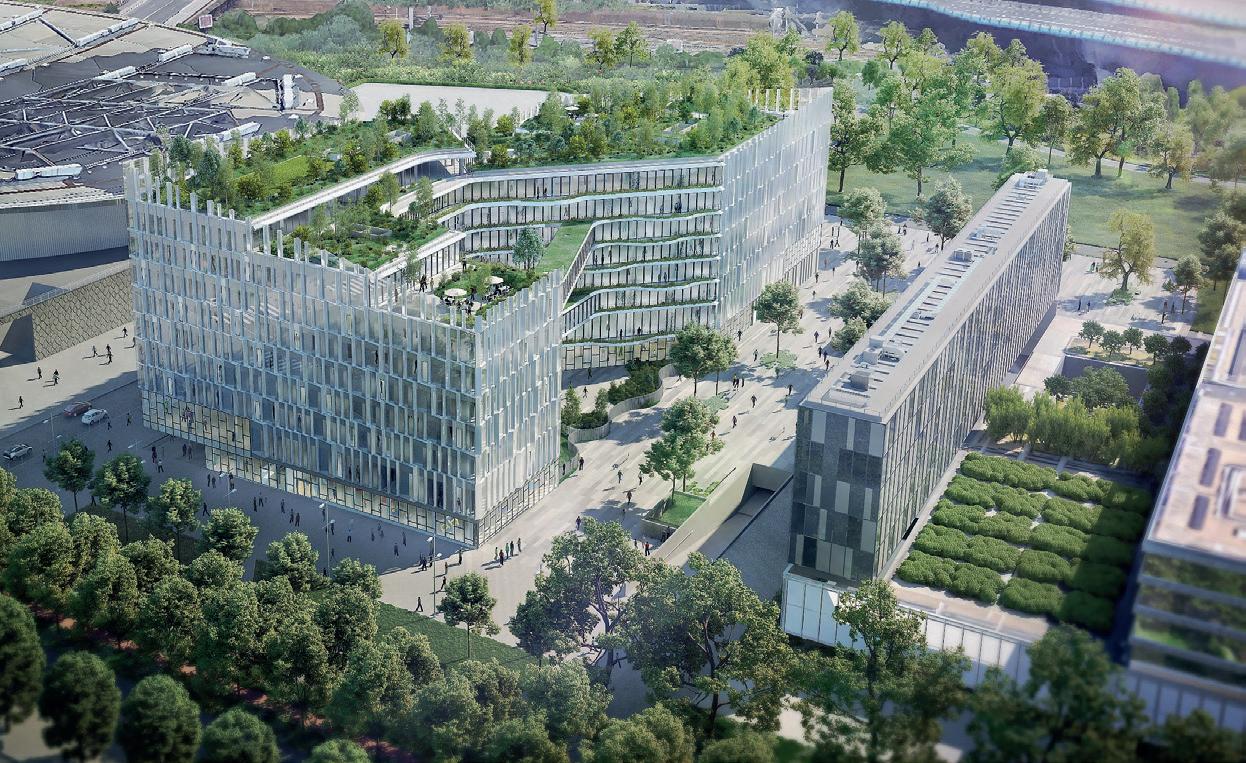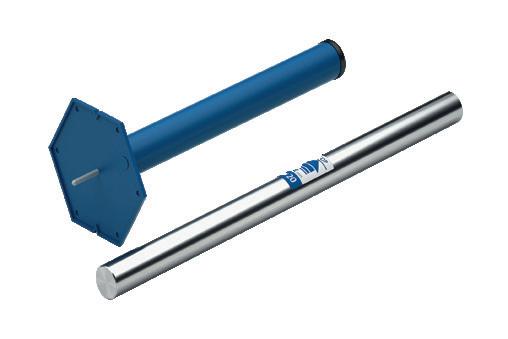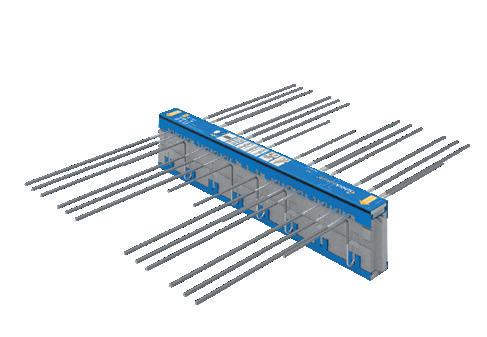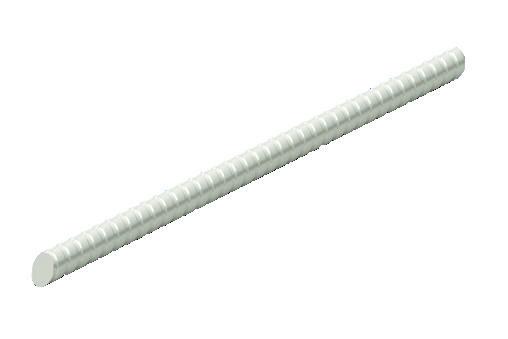
3 minute read
THERMAL BREAKS
from FC&A March 21

SCHÖCK BUILDING PHYSICS EXPERTISE FOR ICONIC FRENCH BIOTOPE
Advertisement
The Biotope building, located in the middle of the important European business district of Euralille, in the French city of Lille, is an iconic 30,000m² seven-storey architectural complex that transforms conventional office accommodation into a selfsustaining ecological community. It is an ultra-energy-efficient building, and minimising thermal bridging throughout was critical. The architects turned to building physics specialist Schöck for its expertise in this area.
SCHÖCK
Designed by Henning Larsen Architects (Copenhagen) and Keurk Architecture (Lille), the Biotope was originally planned to accommodate the European Medicines Agency (EMA). However, due to a change of circumstance, the building now houses ‘The European Metropolis of Lille’, an intercommunal public authority responsible for transport and infrastructure across 85 cities in the north of France.
The building is conceived as a ripple made of glass, light and natural vegetation. These three core elements form the building blocks of the design – with everything geared towards the wellbeing of the staff. The heart of the building is a light-flooded atrium with an imposing spiral staircase which rises upwards in a sweeping curve. Like everything else in the Biotope, the angled glass panels are both beautiful and functional; with double-skin facades regulating the interior temperature, reducing carbon emissions. The serpentine floorplan roughly follows a figureof-eight path, a dramatic departure from the traditional corridor-style office building. Instead, employees circulate through a winding trail of sky bridges, balconies and rooftop gardens. Large glass units link interior office spaces seamlessly, and every floor has access to the numerous exterior open spaces. In terms of functionality, the ground floor features a large reception hall, a 300-seat auditorium, a cafeteria and a bilingual nursery. The first floor is dominated by meeting and conference rooms; the secondto-sixth floors house offices with team and communal areas; and the seventh floor is a panoramic restaurant, which like the floors below has terraces, gardens and balconies.
Minimising thermal bridging is critical

A critical design consideration was the minimisation of any risk of thermal bridging, with its inherent problems of local heat loss and the formation of condensation. To counter such problems, especially at the balcony detailing, Schöck Isokorb loadbearing thermal insulation elements are used. These thermally separate the components from each other, while also forming an integral part of the structure. The Schöck Isokorb offers the architect complete freedom of design. There are no restrictions when insulating curved shapes, balconies with offset heights, or supported balcony variants. Another special feature is earthquake resistance – which had to be guaranteed at specific installation points – and this too is assured with the use of the Isokorb.
Additional Schöck solutions
The exterior walls are also designed to be energy efficient, and the Biotope is characterised by a high proportion of precast concrete elements. On the ground floor, for example, there are core insulated double walls, and this demanded another Schöck solution. The Isolink is an energy-efficient alternative to conventional stainless steel lattice girders, when connecting the concrete skins of core-insulated sandwich and element walls. It is used here as a spacer and connecting element, where the individual components are reliably thermally separated from each other and thermal bridging reduced to a minimum. On the upper floors, yet another Schöck product is installed where expansion joint construction is required. The Schöck Dorn is used to reinforce the non-loadbearing interior walls horizontally. This serves as a safe, shear force connection between concrete components and as a result, the transverse forces occurring in the area of the expansion joints can be transmitted without any problems.



Ultra-energy efficient and built using BIM
Unsurprisingly, this ultra-energyefficient building, which is designed and built entirely using BIM, meets the most stringent environmental standards and has been awarded numerous certifications. BREEAM (for ecological and sociocultural aspects of sustainability); WELL (for the health and wellbeing of users); BiodiverCity (for conservation of biodiversity in urban areas); E+C- (for a positive energy balance and carbon reduction); and WiredScore (as an evaluation of connectivity). Overall, with the Biotope, the architects have created a sustainable building that impresses with its bright, functional and flexible rooms, ingenious visual connections, its successful blend of interior and exterior elements – and, of course, its optimally-integrated climate concept.

